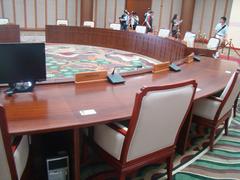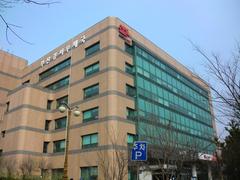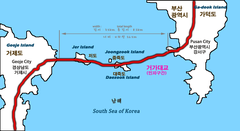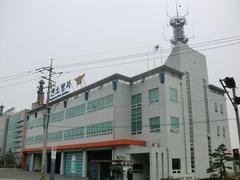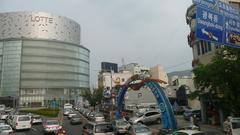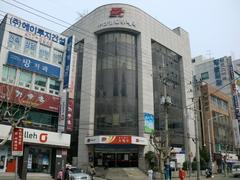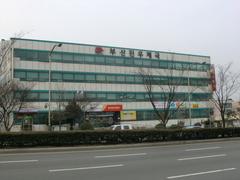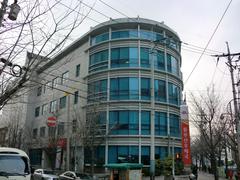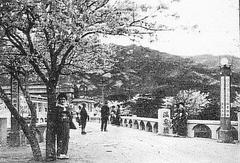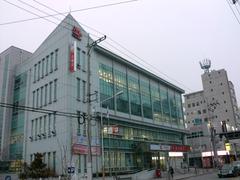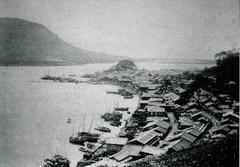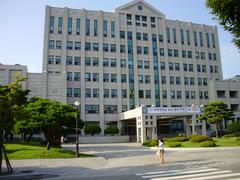Busan Museum of Art: Visiting Hours, Tickets, and Comprehensive Guide to Busan’s Historical and Cultural Sites
Date: 14/06/2025
Introduction
The Busan Museum of Art (BMA), nestled in South Korea’s dynamic port city, stands as a beacon of creativity, cultural heritage, and architectural distinction. Since its establishment in 1978, the museum has evolved into a vibrant hub for both local and international visitors, offering immersive journeys through traditional Korean artifacts, contemporary art exhibitions, and community engagement. This guide provides everything you need for a memorable visit—from current visiting hours and ticketing to detailed insights into the museum’s history, collections, facilities, and nearby attractions. For the most up-to-date information, always refer to the official Busan Museum of Art website and authoritative travel resources (VisitKorea, KoreaTravelPost).
Contents
- Historical Background and Architectural Significance
- Visitor Information: Hours, Tickets, Directions
- Museum Facilities and Accessibility
- Permanent Collections and Exhibition Highlights
- Educational Programs and Community Initiatives
- Special Exhibitions and Annual Events
- Nearby Attractions and Travel Tips
- Frequently Asked Questions (FAQ)
- Conclusion and Resources
Historical Background and Architectural Significance
Origins and Development
Founded in 1978, the Busan Museum of Art began as a guardian of local heritage, focusing on preserving Busan’s traditional culture and historical artifacts. Over time, the museum expanded its mission, marked by key milestones such as:
- 1995: Renamed Busan Metropolitan Museum to reflect broader cultural ambitions.
- 1996: Introduction of Bokcheon Hall, spotlighting relics from the Bokcheon Ancient Tomb of the Three Kingdoms period.
- 2002: Major renovation and expansion, including new exhibition halls and adoption of the current name, Busan Museum of Art.
The museum’s growth mirrors Busan’s emergence as a cosmopolitan city, striving to blend its ancient roots with contemporary creativity.
Architectural Features
The BMA’s award-winning architecture harmonizes traditional Korean elements with modern design. Key features include:
- Spacious, light-filled interiors designed for both preservation and public engagement.
- Dedicated halls for different epochs, such as Bokcheon Hall (archaeological artifacts) and the Lee Ufan Space (minimalism and contemporary art).
- Outdoor Sculpture Park: Integrates art with landscaped gardens and stone relics.
- Universal accessibility: Elevators, ramps, and accessible restrooms throughout.
Its location near the UN Memorial Park further enhances the museum’s contemplative atmosphere and cultural gravitas (VisitKorea).
Visitor Information
Visiting Hours
- Tuesday–Sunday: 10:00 AM – 6:00 PM (some exhibitions may extend to 7:00 PM or later on Fridays)
- Closed: Mondays and New Year’s Day
- Last Admission: 30 minutes before closing
Note: Check the official website for updates during renovations and public holidays.
Ticket Prices
- Adults: 3,000–5,000 KRW (varies by exhibition)
- Youth (ages 7–18): 1,500–3,000 KRW
- Children under 7, seniors (65+), and persons with disabilities: Free or discounted admission
- Special exhibitions: May require separate tickets
- Group discounts: Available with prior reservation
Tickets can be purchased at the museum entrance or online via the ticketing portal.
Directions
- Subway: Line 2 to Centum City Station (Exit 12), 5-minute walk
- Bus: Multiple routes to BEXCO or UN rotary stops nearby
- Taxi: Widely recognized destination in Haeundae-gu
- Parking: On-site parking is available but limited during renovations; public transport is recommended
Museum Facilities and Accessibility
Visitor Amenities
- Information Desk: Multilingual staff, brochures, and maps
- Museum Shop: Art books, catalogs, and souvenirs
- Café: Light snacks with views of the sculpture garden
- Lockers and Cloakroom: Secure storage near the entrance
- Rest Areas: Throughout the galleries
- Restrooms: Accessible facilities on every floor
- Free Wi-Fi: Available throughout the museum
Accessibility
- Wheelchair Access: Step-free entrances, elevators, and complimentary wheelchairs
- Support for Disabilities: Audio guides, tactile materials, large-print texts, and service animal access
- Baby Strollers: Available for families at the information desk
- Parking: Designated spaces for visitors with disabilities
Permanent Collections and Exhibition Highlights
Main Galleries
BMA’s permanent collection, exceeding 2,000 works, emphasizes:
- Korean Modern and Contemporary Art: Masterpieces by Kim Tschang-Yeul, Park Seo-Bo, Lee Ufan, and others
- Busan and Regional Artists: Showcasing local creativity and identity
- International Art: Fostering cross-cultural dialogue
- Media and Installation Art: Video, interactive, and photographic works
Collections are displayed on a rotating basis, ensuring fresh perspectives for repeat visitors (VisitKorea).
Lee Ufan Space
This annex, opened in 2015, is dedicated to the minimalist works of Lee Ufan—a leader in Korea’s Mono-ha movement. The contemplative gallery features rotating displays of his sculptures and paintings (Namu Wiki).
Outdoor Sculpture Park
The landscaped grounds showcase large-scale sculptures by Korean and international artists, blending art with the natural environment (KoreaTravelPost).
Educational and Community Programs
Learning Initiatives
BMA is committed to lifelong learning through:
- Lectures and Workshops: For adults and children, covering art history, techniques, and contemporary issues
- Children’s Museum: Interactive exhibits for young visitors
- Family Art Days: Hands-on activities and creative sessions
- School and Community Outreach: Tailored programs and collaborative projects
Digital Engagement
- Ontact BMA: Virtual tours, artist interviews, and educational videos (art.busan.go.kr)
- Self-Guided Tours: Mobile app resources for independent exploration
Note: Some programs may be temporarily suspended or relocated during renovations. Check the official website for updates.
Special Exhibitions and Annual Events
Major Events
- Busan Biennale: Every two years, BMA is a principal venue for this international contemporary art festival, drawing global attention.
- Artist Talks and Panel Discussions: Engage with leading creators and curators.
- Temporary Thematic Exhibitions: Explore cutting-edge trends, cultural dialogues, and retrospectives of Korean and East Asian art.
Recent Highlights
- Multimedia installations, retrospectives of Korean modern masters, and cross-cultural collaborations with artists from Japan and China have positioned BMA as a key player in Asian contemporary art (iwanderlista.com).
Nearby Attractions and Travel Tips
Top Nearby Cultural Sites
- Centum City: Premier shopping and entertainment district
- Busan Cinema Center: Landmark for film lovers and events
- UN Memorial Park: Serene memorial to Korean War UN forces
- Haeundae Beach: Iconic seaside destination within walking distance
- APEC Naru Park: Scenic riverside park next to the museum
Tips for Visitors
- Visit Early or on Weekdays: To avoid crowds
- Check for Renovation Updates: Some galleries may be temporarily closed; consult the official website
- Use Public Transport: Parking is limited during renovations
- Photography: Allowed in most areas, but restrictions may apply for special exhibitions
Frequently Asked Questions (FAQ)
Q: What are the Busan Museum of Art’s visiting hours?
A: Typically Tuesday–Sunday, 10:00 AM–6:00 PM, closed Mondays. Last admission is 30 minutes before closing. For updates: official website.
Q: How much are tickets?
A: Standard adult admission is 3,000–5,000 KRW, with discounts for youth, seniors, and groups. Special exhibitions may require additional tickets.
Q: Are guided tours available?
A: Yes, in Korean and English. Due to renovations, some tours may be suspended; check online for availability.
Q: Is the museum accessible?
A: Fully accessible with step-free entrances, elevators, and accessible restrooms.
Q: Can I take photographs inside?
A: Allowed in designated areas. No flash or tripods; restrictions may apply for temporary exhibitions.
Q: Are there family-friendly programs?
A: Yes, including Family Art Days, children’s workshops, and interactive exhibits.
Visual and Interactive Resources
- Virtual Tours: Explore selected exhibitions online via the museum’s website
- Interactive Maps: Navigate exhibition spaces and nearby attractions
- Visuals: High-resolution images of the main building, Lee Ufan Space, sculpture park, and nearby sites, each with descriptive alt text (e.g., “Contemporary sculpture in Busan Museum of Art’s outdoor park”)
Conclusion
The Busan Museum of Art is a cornerstone of Busan’s cultural landscape, uniting historical depth with contemporary innovation. Its thoughtfully curated exhibitions, inclusive learning programs, and accessible facilities make it a top destination for art lovers, families, and international visitors. Enhance your visit by exploring nearby landmarks, engaging with digital resources, and checking the latest updates online.
For details on exhibitions, tickets, and amenities, visit the official website. Download the Audiala app for guided tours and follow BMA on social media for news on upcoming events and exhibitions.
Official Sources
- Busan Museum of Art: Visiting Hours, Tickets, and Historical Insights
- Busan Museum of Art Visiting Hours, Tickets, Layout, Facilities, and Permanent Collections
- Busan Museum of Art Visiting Hours, Tickets, Special Exhibitions, and Events Guide
- Busan Museum of Art Visiting Hours, Tickets, and Visitor Guide
- VisitKorea: Busan Museum of Art Overview
- KoreaTravelPost: Best Museums in Busan
- Namu Wiki: Busan Museum of Art
- Busan Museum of Art Official Website

